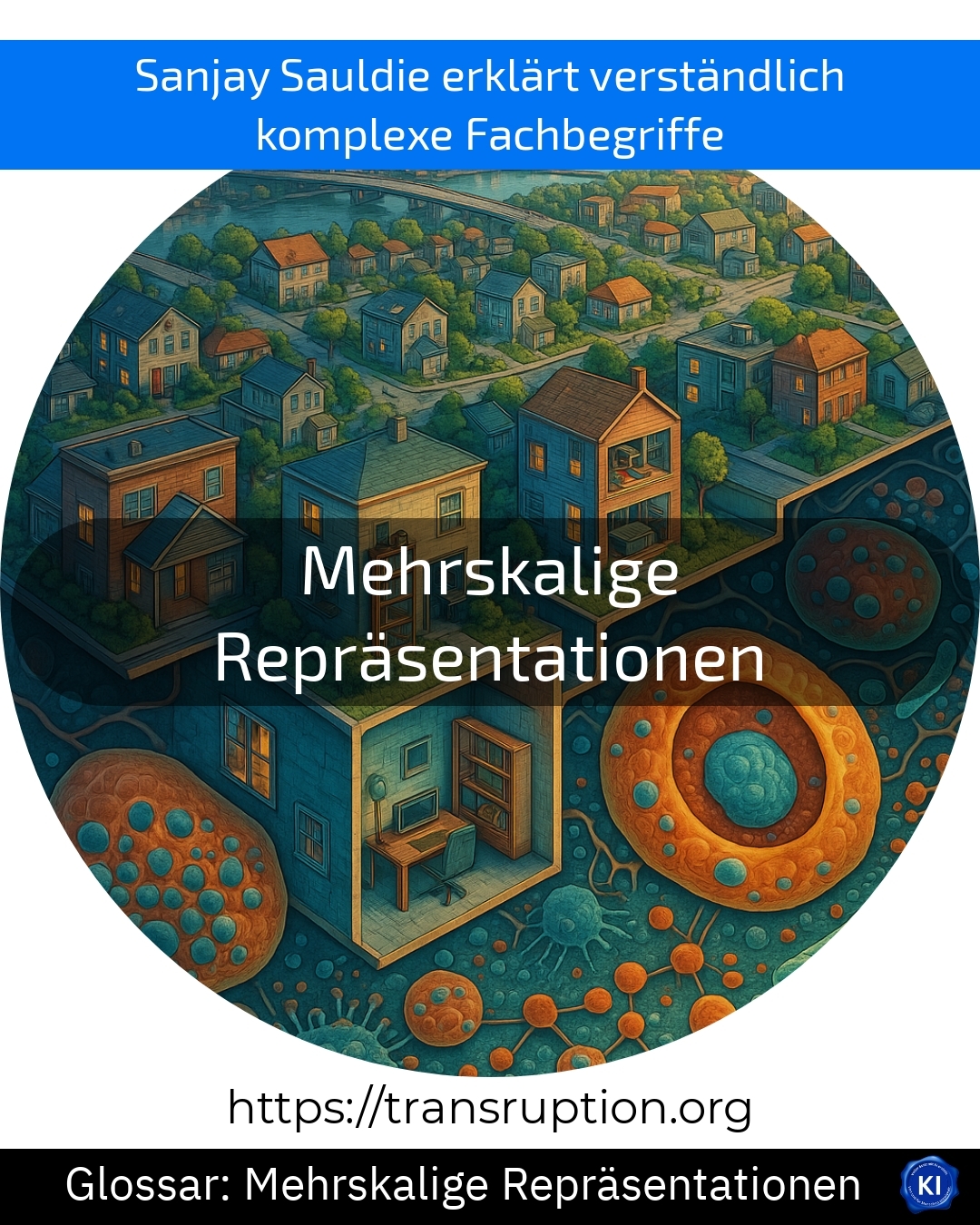The term multi-scale representations originates from the fields of artificial intelligence, big data and smart data as well as industry and Factory 4.0. It describes a method for representing and analysing complex data or structures on different levels or "scales".
Imagine you are looking at a city map. On a coarse level you only see parts of the city, on a finer level you recognise individual streets, and even closer up you can see buildings. Multi-scale representations work in a similar way: they help computers or people to view large amounts of data from different angles and thus better recognise patterns or relationships.
In artificial intelligence, multi-scale representations are used, for example, to efficiently analyse photos or images. A robot in a factory can thus recognise whether a workpiece is roughly correctly shaped and examine details more closely if necessary.
Multi-scale representations enable better decisions to be made, as they make information available on a large scale or in detail as required. This makes this method particularly valuable for modern, data-driven technologies.















